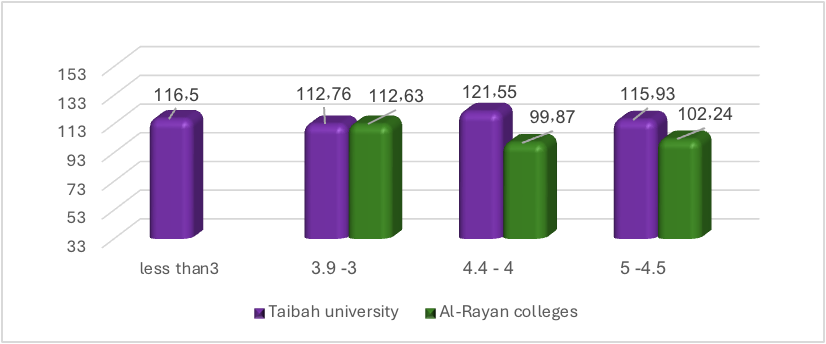Volume 4, Issue 7
July 2024
Impact of Emotional Intelligence on Communication Skills and Academic Performance of Medical Students in Medina
Hanan Elsayed, Rehab Hejji Aljohani, Maram Salamah Alrehely, May Mohammed Almouteri, Samah Faisal Alraddadi, Daliah Mubarak Alharbi, Safaa Hammad Alhusseini
DOI: http://dx.doi.org/10.52533/JOHS.2024.40701
Keywords: academic performance, emotional intelligence, communication skills, medical students, interns
Background: Emotional intelligence (EI) is defined as the ability to monitor emotions, guide behavior and thinking, and control and/or adjust emotions to adapt to environments and achieve goals. EI has been associated with improved doctor-patient relationships and enhanced academic achievement.
Method: A cross-sectional study was conducted of 388 fifth- and sixth-year medical students and interns at Taibah University and Al-Rayan Colleges in Medina, Kingdom of Saudi Arabia (KSA), in the 2021–2022 academic year. The data collection tools consisted of a consent form and three questionnaires. The first questionnaire served to obtain the participants’ demographic data and grade point average (GPA), the second was the Schutte Self-Report Emotional Intelligence Test (SSEIT), and the third was the Communication Skills Attitude Scale (CSAS).
Results: Of 621 eligible students at the two institutions, 388 (62.5%) completed the questionnaires. The results demonstrate a strongly significant positive correlation between EI and the total and positive communication skill attitude scores among the fifth- and sixth-year medical students and medical interns who participated and indicated that EI and communication skills scores were independent of GPA, study year, gender, and age.
Conclusions: A positive relationship between communication skills and EI is reported. The higher EI and communication skills scores were observed regardless of the participants’ GPA, study year, gender, or age. Further study is needed to determine how communication skills and EI affect academic performance.
Introduction
Emotional intelligence (EI) was described as a construct more than 25 years ago (1) and has gained popularity as a means of estimating performance beyond the standard measures of general intelligence (2). EI is defined as the ability to identify, differentiate, and monitor the emotions of other people and use this information to direct thinking and behavior and to adjust and/or manage one’s own emotions to adapt to situations and achieve goals (3). In other words, EI is the ability to read the intentions, desires, and moods of others, and it is essential for displaying qualities such as empathy and building effective relationships (4). Naturally, this form of intelligence plays a central role in medical education and medicine generally, and it has been associated with academic achievement and enhanced doctor-patient relationships (5) though the evidence in this regard is mixed (6, 7).
Numerous studies have shown that the training required to produce competent, well-balanced, and level-headed doctors as well as favorable clinical outcomes must address EI (8). Unnikrishnan et al. argued that the cultivation of EI in future doctors helps them to make rational decisions at critical moments and adapt easily to the ever-changing medical field by improving their understanding of their emotions and those of their patients. Furthermore, EI promotes positive social behavior in medical students (9). EI is also fundamental to theories of the emotions and serves as a logical complement to communication skills. In medicine specifically, EI-based education can enhance professionalism and communication skills (10). A study at King Abdulaziz University in Jeddah associated EI, described as an overlooked essential aspect of mental ability, with academic performance and showed that EI scores improved with medical students’ age and year of study, thus indicating that such skills can be acquired and reinforced through life experiences and that stress management can improve EI (11). Another study conducted at King Saud bin Abdulaziz University for Health Sciences in Riyadh found that EI correlated significantly and positively with academic performance, emotional well-being, and low stress levels in undergraduate medical students (12).
However, previous studies have faced difficulties in drawing uniform conclusions because of variation in the tools used to measure EI, and very few indicate the response rate (8). The data generated by this research are, accordingly, insufficient to demonstrate the relationship among EI, communication skills, and academic performance for medical students. The purpose of this research is to assess EI and communication skills among fifth- and sixth-year medical students and interns in Medina, demonstrate the relationship between them and the impact of these skills on their on academic performance based on their study year, gender, and age.
Methods
Study Settings
This cross-sectional observational study was conducted at Taibah University and Al-Rayan Colleges in Al-Medina Almonawwara (Medina) in the KSA from November 2021 to August 2022. The study included male and female fifth- and sixth-year medical students and interns at Taibah University and Al-Rayan Colleges in Medina. The instruction at both institutions is separated by gender. We used a convenience sampling method on a population of 621 individuals. Consulting the website http://sampsize.sourceforge.net/iface/, we determined that for a confidence interval of 95% and a precision level of 5%, the sample had to include at least 238 students, and we enrolled as participants in the study 388 medical students and interns at the two institutions. The inclusion criteria were such that the participants were of both genders and in either their fifth or sixth academic years. Conversely, the exclusion criteria were such that the sample included no first-, second-, third-, or fourth-year students.
Study measurements
A consent form and three questionnaires served to collect the data. The semi-structured questionnaire consisted of three parts. The first collected demographic data and grade point average (GPA) for the previous semester. The second part used the Schutte Self-Report Emotional Intelligence Test (SSEIT), a 33-item questionnaire with the answers scored on a five-point Likert-type scale to measure EI traits, specifically, emotional expression (13 items), emotional regulation (10 items), and emotional utilization (10 items), with scores ranging from 33 to 165. The third part used the Communication Skills Attitude Scale (CSAS), which consists of 26 items, half written in the form of positive statements and the other half in the form of negative statements – about communication skills learning, with the answers scored on a five-point Likert scale, ranging from 1 (strongly disagree) to 5 (strongly agree). The CSAS is valid and reliable (11, 12) as is the SSEIT, which, in particular, has demonstrated test-retest reliability and good internal consistency (13, 14).
We contacted potential participants through WhatsApp networks, informing them about the purpose of the study and explaining that participation was optional and anonymous. Those willing to participate signed a consent form and then filled out the self-administered online questionnaire. More specifically, a member of the research team delivered the questionnaire along with contact information to the participants, who took five to ten minutes to complete it. The demographic parameters were gender, GPA, and age.
Data management and analysis
We used the Statistical Package for the Social Sciences version 26.0 software (SPSS Inc., Chicago, IL) to analyze the data, presenting the continuous data as the mean and standard deviation (±SD) and representing the categorical variables as frequencies and percentages. We used Spearman’s rank correlation to determine the relationship between EI on the one hand and GPA and communication skills attitude on the other. We used the Mann-Whitney U and Kruskal Wallis H tests to compare the scores for EI and communication skills attitude across the demographic variables. A p-value of less than 0.05 was considered statistically significant, and the confidence interval was 95%.
Ethical considerations
We obtained ethical approval from the ethics committees of the medicine faculties at Taibah University IRB00010413. All of the participants provided their consent voluntarily, which appeared on the first page of the questionnaire along with a full explanation of the objectives of the study. Participants were informed about the confidentiality of their data collection and that they could withdraw from the study at any time without giving a reason.
Results
As discussed above, the SSEIT measures general EI using a scale with items based on the Salovey and Mayer model of EI.13 It is a 33-item self-report using a scale ranging from 1 (strongly disagree) to 5 (strongly agree), with reversed scoring of items 5, 28, and 33. Scores range from 33 to 165, with higher scores indicating stronger EI characteristics for the perception of emotions (items 5, 9, 15, 18, 19, 22, 25, 29, 32, and 33), the management of one’s own emotions (items 2, 3, 10, 12, 14, 21, 23, 28, and 31), social skills and the management of others’ emotions (items 1, 4, 11, 13, 16, 24, 26, and 30), and the utilization of emotions (items 6, 7, 8, 17, 20, and 27). The 26-item CSAS, with its positive and negative subscales, was developed in the UK to measure positive attitudes (items 4, 5, 7, 9, 10, 12, 14, 16, 18, 21, 23, 22, and 25, with 22 using a reversed score) and negative attitudes (items 1, 2, 3, 6, 8, 11, 13, 15, 17, 19, 20, 24, and 26, with 1 using a reversed score) toward learning communication skills and is scored, as just described, on a Likert-style scale ranging from 1 (strongly disagree) to 5 (strongly agree).
The sample consisted of 388 medical students in Medina. Table 1 presents the sociodemographic characteristics of the sample. Among the participants, 35.3% (n = 137) reported their gender as male and 64% (n = 251) as female, and 95.9% were between the ages of 21 and 25. Those attending Taibah University accounted for 71.4% of the participants; 40.2% of the participants were in their fifth academic year, and 47.2% of them had a GPA in the range of 4.0 to 4.4.
|
Table 1: Characteristics of study participants (n = 388). |
||||
|
Variable |
Frequency |
Percentage |
EI mean (±SD) |
Communication skill mean (±SD) |
|
Gender |
||||
|
Male |
137 |
35.3% |
115.63 (±20.52) |
80.33 (±12.25) |
|
Female |
251 |
64.7% |
112.6 (±23.63) |
79.43 (±13.71) |
|
Age |
||||
|
21–25 years |
372 |
95.9% |
113.58 (±22.433) |
79.73 (±13) |
|
26 years and above |
16 |
4.1% |
115.75 (±26.95) |
80.19 (±17.87) |
|
Institution |
||||
|
Taibah University |
277 |
71.4% |
118 (±19.04) |
81.44 (±11.21) |
|
Al-Rayan Colleges |
111 |
28.6% |
102.85 (±26.87) |
75.53 (±16.52) |
|
GPA |
||||
|
< 3.0 |
2 |
0.5% |
116.50 (±24.75) |
65.50 (±34.65) |
|
3.0–3.9 |
65 |
16.8% |
112.72 (±22.1) |
80.22 (±14.74) |
|
4.0–4.4 |
183 |
47.2% |
115.03 (±22.73) |
80.25 (±12.86) |
|
4.5–5.0 |
138 |
35.6% |
112.26 (±22.79) |
79.07 (±12.6) |
|
Year of study |
||||
|
Fifth |
156 |
40.2% |
112.74 (±24.58) |
79.88 (±15.45) |
|
Sixth |
142 |
36.6% |
110.11 (±23.26) |
78.27 (±13.54) |
|
Medical intern |
90 |
23.2% |
120.88 (±15.42) |
81.86 (±6.67) |
Figure 1 shows the EI mean scores among the Taibah University and Al-Rayan Colleges students for the GPA variable. Those of the Taibah University students were higher than those of the Al-Rayan students across all GPA levels.
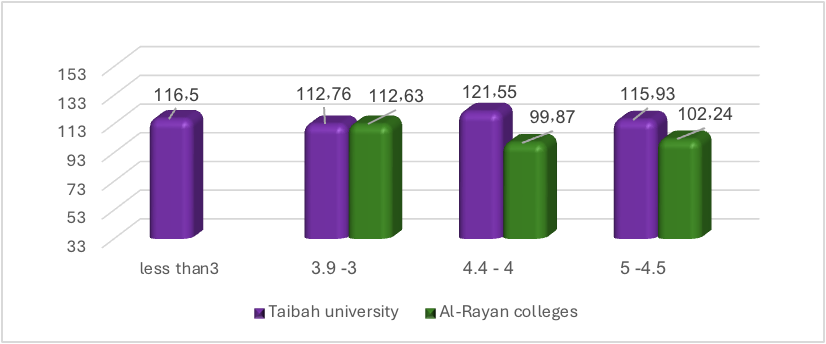
Figure 1: Emotional intelligence among Taibah University and Al-Rayan Colleges students by GPA (n = 388).
Figure 2 illustrates the mean scores on EI among the Taibah University and Al-Rayan Colleges College students for the year-of-study variable. The mean EI scores of the Taibah University students were higher than those of the Al-Rayan students in both the fifth and sixth years.
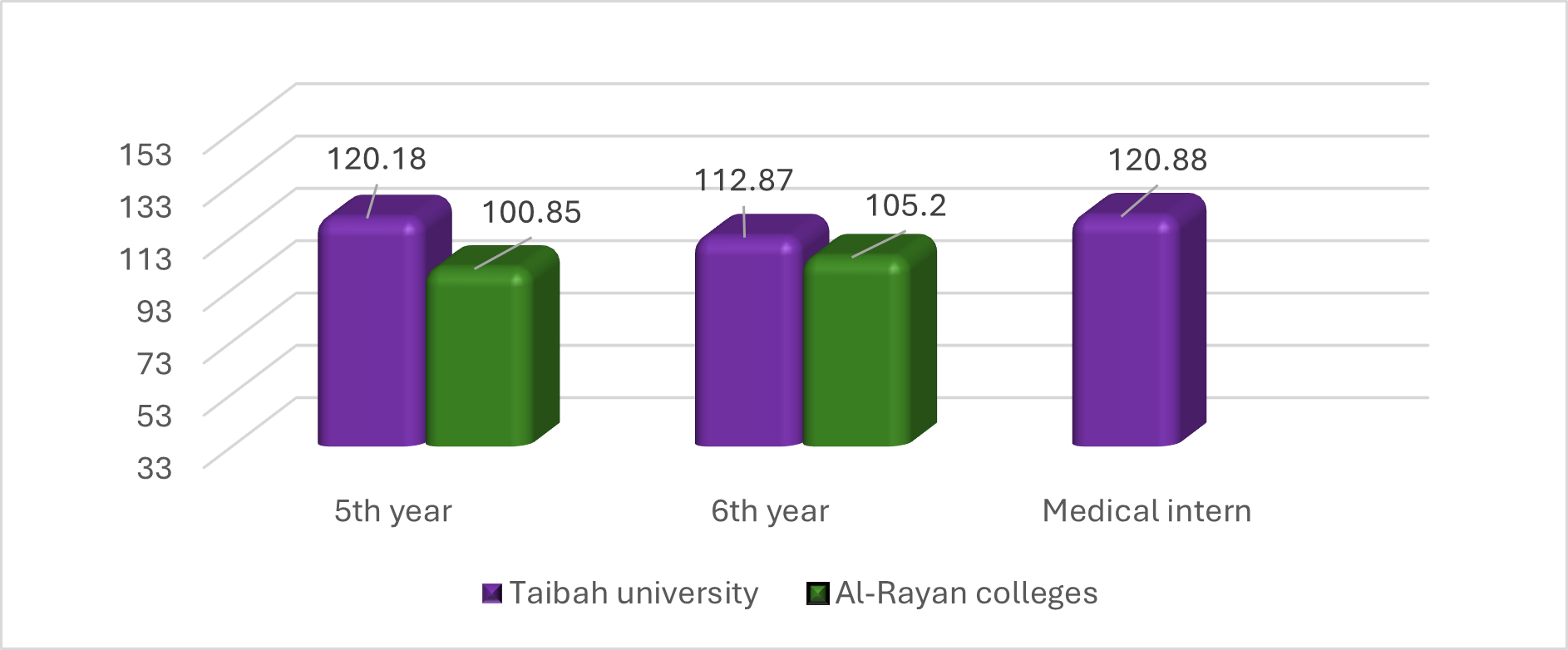
Figure 2: EI among Taibah University and Al-Rayan Colleges students by year of study (n = 388).
Figure 3 shows the mean scores for communication skills for the Taibah University and Al-Rayan Colleges students by GPA. Those of the Taibah University students were higher than those of the Al-Rayan students across all GPA levels.
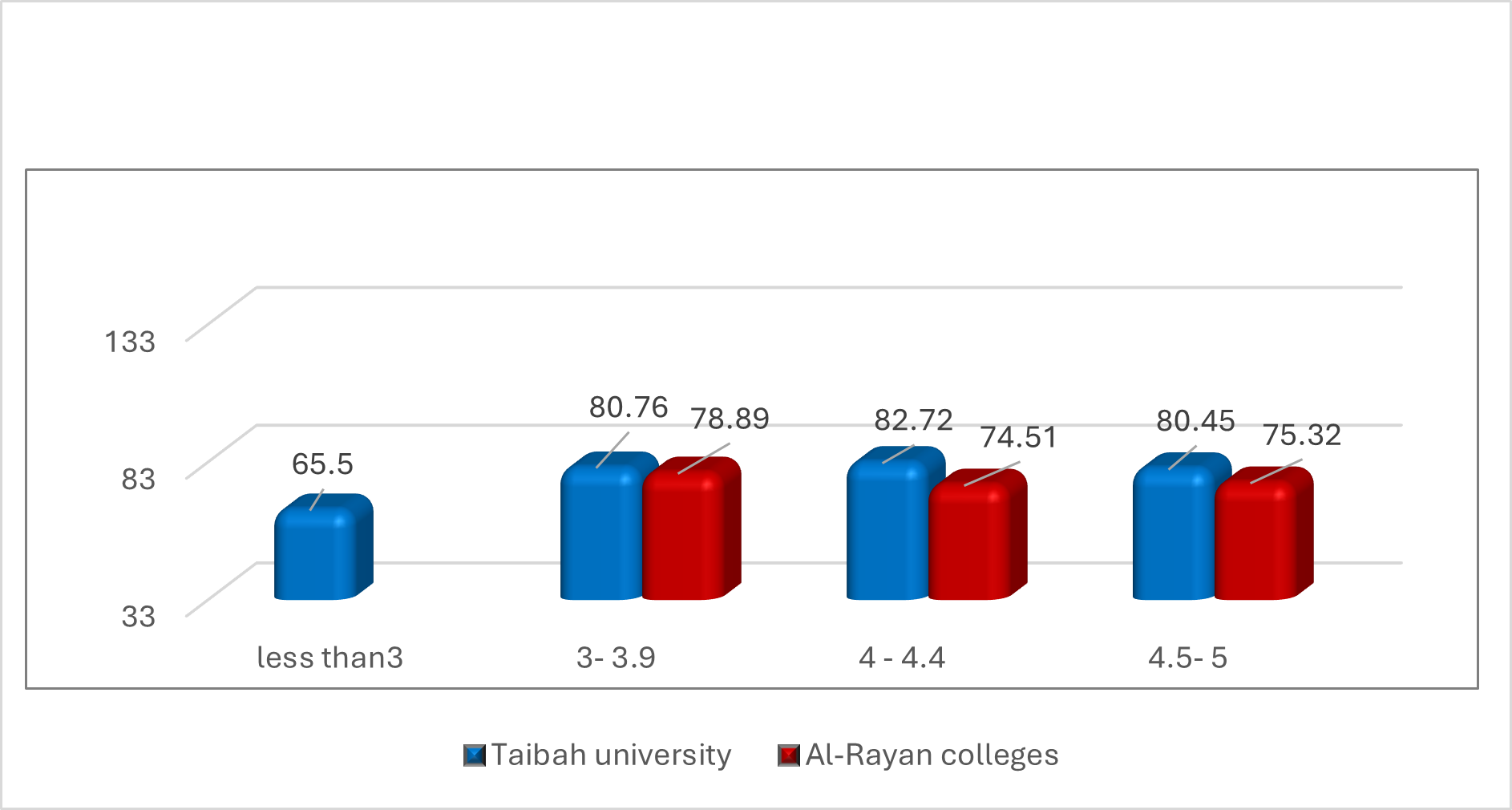
Figure 3: Communication skills among Taibah University and Al-Rayan Colleges students by GPA (n = 388).
Figure 4 illustrates the mean scores for communication skills among Taibah University and Al-Rayan Colleges students by year of study. Those of the Taibah University students were higher than those of the Al-Rayan students in both their fifth and sixth years.
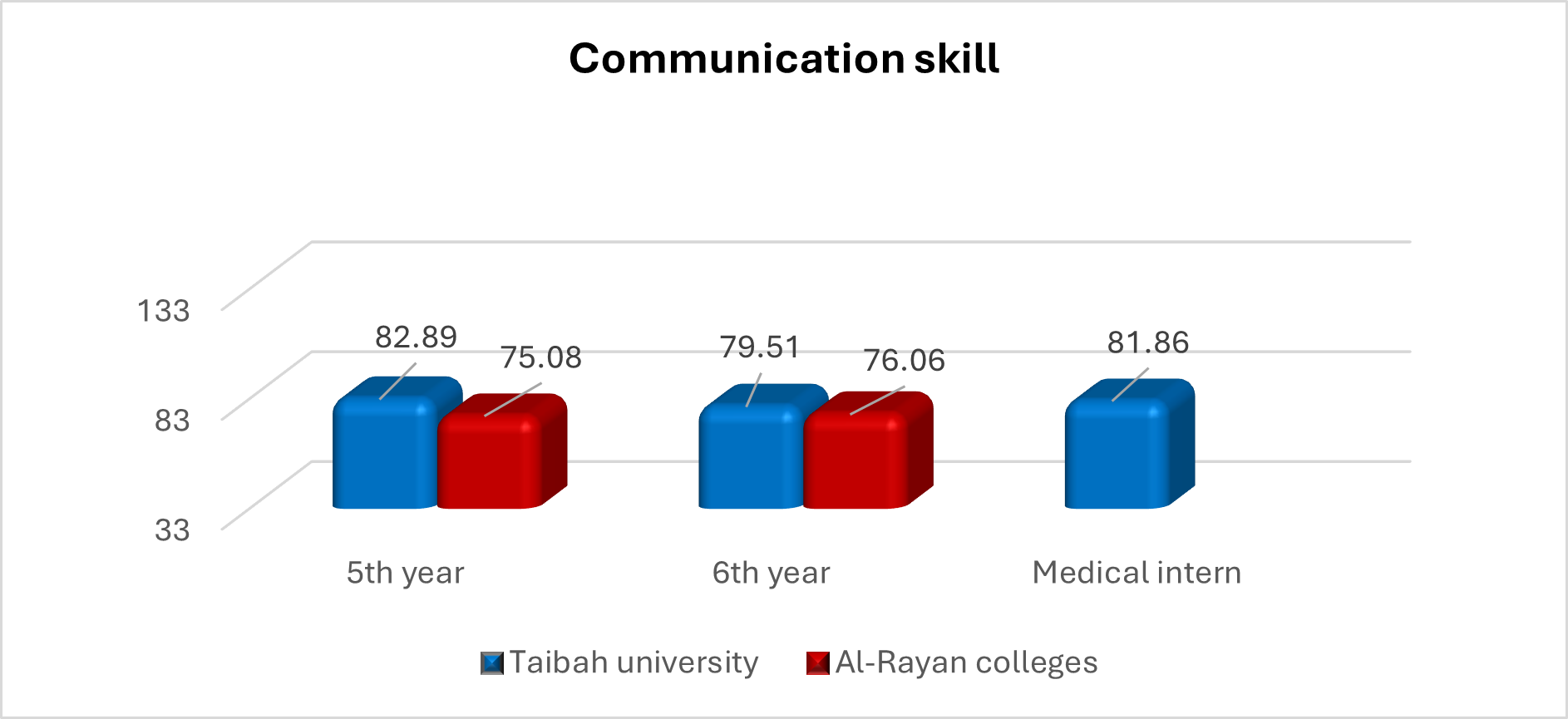
Figure 4: Communication skills among Taibah University and Al-Rayan Colleges students by year of study (n = 388).
We computed the Spearman’s rank correlation to assess the relationship between the EI scores and the participants’ GPAs. As Figure 5 shows, we found no relationship between the two variables (r (386) = -.024, p = .635).

Figure 5: Relationship between EI scores and GPA.
As Figure 6 shows, we found no relationship between the participants’ EI scores and their year of study (r (386) = .088, p = .082).
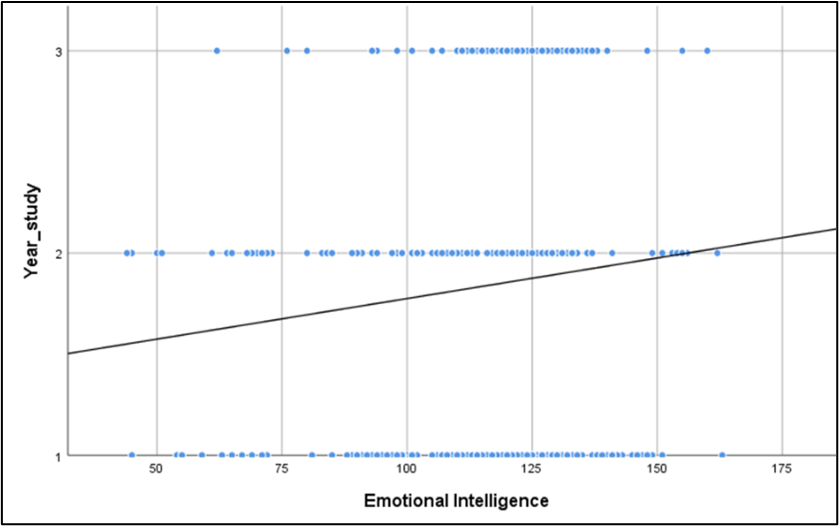
Figure 6: Relationship between EI scores and year of study.
As Figure 7 shows, we found a significant strong positive correlation between the participants’ EI scores and their scores on the positive attitude subscale (r (386) = .667, p < .001).

Figure 7: Relationship between EI scores and scores on the positive attitude scale.
As Figure 8 shows, we found a significant but weak negative correlation between the participants’ EI scores and their scores on the negative attitude subscale (r (386) = -.134, p = .008).
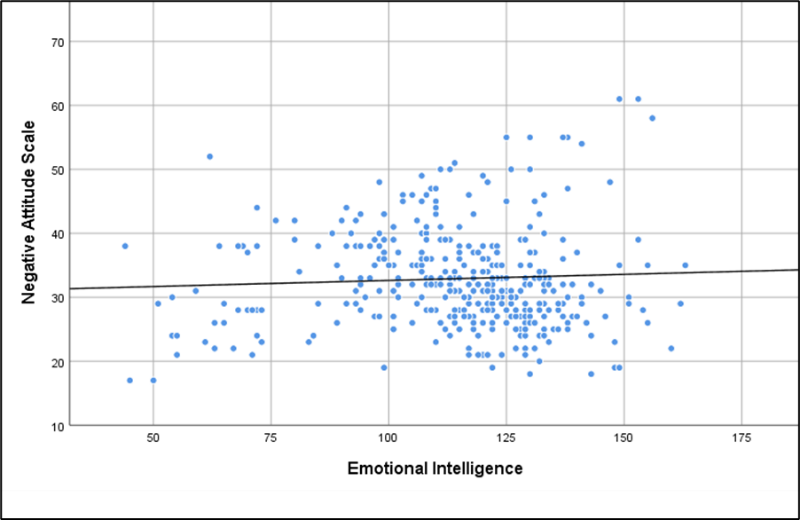
Figure 8: Relationship between EI scores and scores on the negative attitude scale.
As Figure 9 shows, we found a significant moderate positive correlation between the participants’ EI scores and their communication skills attitude scale scores (r (386) = .439, p < .001).
As Figure 10 shows, we found no relationship between the participants’ communication skills attitude scale scores and their GPAs (r (386) = -.051, p = .319).
As Figure 11 shows, we found no relationship between the participants’ communication skills attitude scale scores and their year of study (r (386) = .022, p = .665).
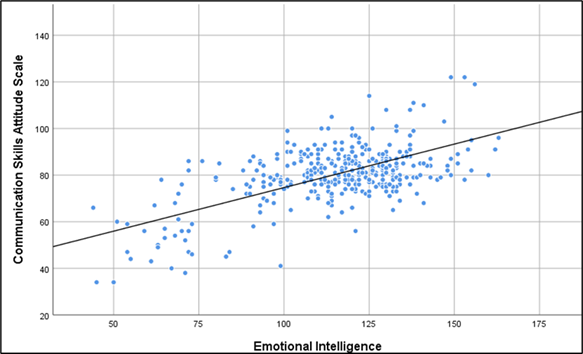
Figure 9: Relationship between EI scores and communication skills attitude scale scores.

Figure 10: Relationship between communication skills attitude scale scores and GPA.
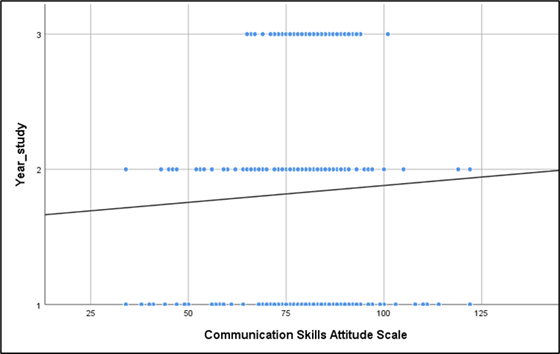
Figure 11: Relationship between communication skills attitude scale scores and year of study.???????
We used the Mann-Whitney U and Kruskal-Wallis H tests to compare the participants’ scores across the demographic variables, with p < 0.05 indicating statistical significance. The results, presented in Table 2, show a significant difference between the participants from Taibah University and those from Al-Rayan Colleges, [p < .001] across the four domains. The results of the Kruskal-Wallis H test likewise show a significant difference across the four domains of EI scores depending on the medical interns’ year of study [p < .05].
|
Table 2: Association between EI scores and the demographic variables (n = 388). |
||||||||||||
|
Variable |
Category |
Perception of Emotion |
Managing Own Emotions |
Managing Others’ Emotions |
Utilization of Emotion |
EI |
||||||
|
Mean Rank |
P-value |
Mean Rank |
P-value |
Mean Rank |
P-value |
Mean Rank |
P-value |
Mean Rank |
P-value |
|||
|
Gendera |
Male |
204.62 |
.188 |
203.54 |
.240 |
192.22 |
.767 |
199.73 |
.54 |
200. 6 |
.431 |
|
|
Female |
188.97 |
189.57 |
195.74 |
191.65 |
191.2 |
|||||||
|
Agea |
21–25 years |
194.68 |
.877 |
193.22 |
.278 |
193.62 |
.454 |
193.95 |
.643 |
193.8 |
.505 |
|
|
26 years and above |
190.25 |
224.25 |
215.00 |
207.19 |
212. 8 |
|||||||
|
Institutiona |
Taibah University |
213.75 |
<.001* |
209.31 |
<.001* |
213.63 |
<.001* |
210.18 |
<.001* |
213.8 |
<.001* |
|
|
Al-Rayan Colleges |
146.45 |
157.55 |
146.76 |
155.37 |
146.4 |
|||||||
|
GPAb |
Less than 3.0 |
176.00 |
.750 |
217.75 |
.562 |
228.75 |
.237 |
151.75 |
.393 |
209.8 |
.379 |
|
|
3.0–3.9 |
182.10 |
196.65 |
181.81 |
179.04 |
183.3 |
|||||||
|
4.0–4.4 |
199.46 |
201.46 |
206.36 |
203.73 |
204.9 |
|||||||
|
4.5–5.0 |
194.03 |
183.92 |
184.25 |
190.16 |
185. 8 |
|||||||
|
Year of studyb |
Fifth |
187.99 |
.012* |
197.31 |
.001* |
191.09 |
.001* |
195.76 |
.017* |
193.5 |
.001* |
|
|
Sixth |
182.32 |
170.43 |
175.34 |
177.01 |
172.7 |
|||||||
|
Medical intern |
225.01 |
227.60 |
230.64 |
219.92 |
230.7 |
|||||||
aMann-Whitney U, bKruskal-Wallis test. *P-values < .05 are statistically significant.
As Table 3 shows, we found a significant difference between the male and female students in the negative attitude scale [p = .023], for male students. Also, the results indicate significant differences between the students from Taibah University and those from Al-Rayan Colleges in the scores for the CSAS and its subscales, for the former, in the positive attitude scale [p < .001] and communication skills attitude scale [p < .001], and for the latter, in the negative attitude scale [p = .024]. The results of the Kruskal-Wallis H test showed a significant difference in the positive attitude scale across the years of study ([p < .001]) for the medical interns.
|
Table 3: Association between communication skills and demographic variables (n = 388). |
|||||||
|
Variable |
Category |
PAS |
NAS |
Communication skills |
|||
|
Mean Rank |
P-value |
Mean Rank |
P-value |
Mean Rank |
P-value |
||
|
Gendera |
Male |
182.14 |
.108 |
212.05 |
.023* |
196.02 |
.843 |
|
Female |
201.25 |
184.92 |
193.67 |
||||
|
Agea |
21–25 years |
192.67 |
.120 |
195.24 |
.529 |
192.75 |
.137 |
|
26 years and above |
237.13 |
177.22 |
235.28 |
||||
|
Institutiona |
Taibah University |
215.10 |
<.001* |
187.18 |
.042* |
207.23 |
<.001* |
|
Al-Rayan Colleges |
143.10 |
212.77 |
162.74 |
||||
|
GPAb |
Less than 3.0 |
196.00 |
.174 |
62.25 |
.065 |
171.00 |
.715 |
|
3.0–3.9 |
184.42 |
211.42 |
200.25 |
||||
|
4.0–4.4 |
207.84 |
182.85 |
199.10 |
||||
|
4.5–5 |
181.53 |
203.90 |
186.03 |
||||
|
Year of studyb |
Fifth |
192.51 |
< .001* |
202.45 |
.052 |
198.05 |
.086 |
|
Sixth |
170.38 |
201.69 |
179.50 |
||||
|
Medical intern |
236.01 |
169.37 |
212.01 |
||||
aMann-Whitney U, bKruskal-Wallis test. *P-values < .05 are statistically significant.
Discussion
Work in the medical world is stressful, (15) and medical students need to learn how to control their emotions and improve their communication skills to achieve success. Based on an extensive literature search, we believe that this study is the first to demonstrate the correlations between EI and both communication skill attitude and academic performance among fifth- and sixth-year medical students and medical interns in Medina. Further, in conducting it, we employed two internationally validated scales.
We found a significant positive and strong correlation between EI and total and positive communication skill attitude scores across the participants’ study years. A previous study of Ph.D. and master’s students found similarly that communication skills correlated with the students’ EI. The ability to control their emotions increases the effectiveness of medical residents and students in the ward, especially in terms of communication, facilitating rational decision-making irrespective of the setting (16).
We also found that the participants’ EI and communication skills scores were independent of their GPA across all three study years, being higher among those with a GPA in the range of 4.0–4.5. This result is consistent with the results of a study from India showing a negative correlation between EI and academic achievement (17) and other studies showing GPA to be positively associated with EI (2, 10). Previous research also showed that medical students’ performance, assessed during OSCEs and clinical examinations of simulated patients, improved significantly after they received communications skills training (18). An explanation for this finding is that students whose major motivator is a passion for medicine may be less concerned about academic outcomes and more engaged in the learning experience than any goal-related outcome, including grades; for this reason, some students with relatively strong EI scores struggle academically.
We also found that EI and communication skills scores were independent of the participants’ academic year, observing higher scores for medical interns in their fifth year than those in their sixth year. This finding is consistent with the inability of many other studies to show a significant association between EI and study year (5, 12, 19), though one study reported an association between increased EI scores and students’ increasing ages and academic years (20). The mixed findings may be attributable to the fact that our study included more fifth-year than sixth-year students.
Similarly, we found no significant difference between the male and female participants in terms of their EI and communication skills. Previous studies, however, reported observing higher levels of EI either in male subjects (21, 22) or female subjects (2, 7, 23) Our finding receives support from our confirmation of a positive relationship between EI and communication skills. In this case, the mixed findings could be attributable to cultural and social differences across societies relating to gender.
We further observed that the participants’ EI and communication skills scores did not vary significantly depending on their age, thus corroborating the results of a previous study showing that age had no significant relationship with EI (21). Other studies have found that age and attitudes toward learning clinical communication skills did not correlate (20), that Ph.D. students’ EI tended to be greater than that of master’s degree students, (24) and that EI correlated with age and experience from childhood to adulthood (25). Our results in this regard could reflect the fact that medical students tend to belong to the narrow cohort of young adults (26).
One limitation of our study was our use of self-reporting methods to measure both EI and communication skill attitude. However, the subjects’ perceptions, rather than their actual behaviors, may lead to bias (27).
Recommendations
Based on the findings presented here, we recommend, first, that medical schools include communication skills in the teaching and training of students, who, as practitioners, will benefit from having developed strong communication practices early in life. Also, a follow-up study could support and extend the results of the current study. Further, additional insight is needed into the cultural influences in EI in order to inform the creation of a scale that is more sensitive to the differences across groups. Lastly, researchers should consider establishing guidelines for the EI abilities that students are expected to display at various levels of undergraduate medical education.
Conclusion
EI is a theory of emotions that serves as a logical complement to communication skills. This study of fifth- and sixth-year medical students and interns at two institutions in Medina demonstrated a positive association between EI and communication skills. Also, higher EI and communication skills scores were found to be independent of GPA, study year, gender, and age. To corroborate the findings presented here, additional research and follow-up studies are needed that assess the impact of EI and communication skills on academic performance.
Acknowledgements
The authors thank the participants of the study for their kind cooperation. We also thank our supervisor for her support and are grateful to the College of Medicine at Taibah University for providing this opportunity.
Disclosure
The authors have no conflicting interests to declare.
Funding
The authors have no funding to declare.
Ethical Consideration
The research ethics committee (CM-REC, IRB00010413) of the College of Medicine at Taibah University granted the authors’ request for permission to conduct the research. All of the participants provided their consent voluntarily, and all of their personal information was kept private. The participants were also informed that only the researchers would access their data.
Data availability
The corresponding author will provide the datasets used and/or analyzed in the present study upon reasonable request.
Author Contribution
In our capacity as authors, we certify that we have made substantial contributions to the ideas, intellectual content, analysis, design, and writing of the manuscript as well as the interpretation of the data, and we accept responsibility for it in the public arena. Each of us consented to be listed as a contributor.
